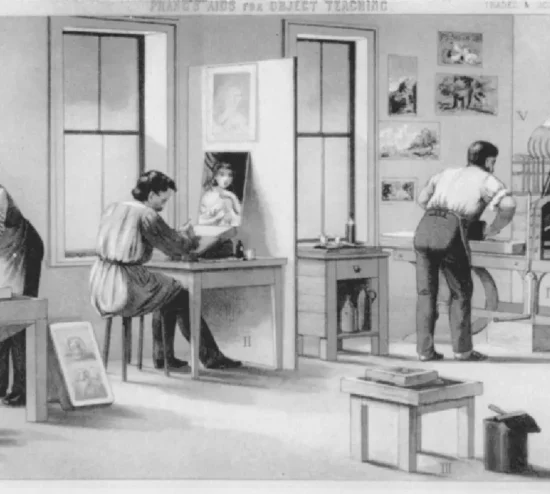Fate threw Tatyana Grosman and her husband a bone when, in 1957, they happened to discover two lithographic stones in the front yard of their home in Long Island. This unexpected discovery catapulted the Grosmans to printing and publishing acclaim and paved the way for the foundation of the United Limited Art Editions (ULAE).
In the 1960s, ULAE was amongst the first groups of fine art print publishers to incite a revival of the art of printmaking through their creation of contemporary art prints. They were joined by studios such as the Tamarind Institute and Gemini Ltd., who also devoted themselves to the creation of original editioned works by contemporary artists. The Tamarind Institute, in particular, prioritized the education of new printmakers and the development of new technologies such as light-fast inks and innovative ways to use aluminum plates. Their efforts greatly contributed to a new generation of skilled master printers who were more than capable in translating an artist’s vision to print.
While fine art printmaking techniques flourished in Europe in the 1960s with artists such as Joan Miró, Marc Chagall, and Pablo Picasso working closely with master printers, 1960s America was more concerned with painting and sculpture.
However, with the increased renown of Pop Art and artists such as Andy Warhol and Roy Lichtenstein (who used screen printing to create unique original works), America’s interest in original prints steadily increased. Large-scale, colorful prints began to appear in the art market, garnering increased recognition (and value).
As a gallery who specializes in fine art prints by renowned artists such as Albrecht Dürer, Pierre-Auguste Renoir, Alexander Calder, and Chuck Close, Masterworks Fine Art recognizes the time, energy, and skill required to create a fine art print. The art of printmaking is a delicate collaboration between the artist and the master printer. As master ULAE printer Bill Goldston states,
“The printer becomes a kind of alter ego to the artist.” Both artist and printer are necessary to achieve a common goal. John Dorfman states in “Freedom of the Press,” “The idea of help is very important in contemporary printmaking.”
This concept of “help” has always been an essential element of printmaking. From the days of Albrecht Dürer to contemporary times, artists have relied on master printers to assist them in tackling a difficult though remarkable medium.
At Masterworks, we are often asked the age-old question, “Why do artists make prints?” Firstly, prints allow artists to create multiple works, thereby reaching a wider audience. Part of this drive is creative and perhaps part is driven by profit; nonetheless, prints provide a means for artists to make their artwork more accessible to the public. In turn, many artists become captivated with the technical aspects of printmaking. They view printmaking as a challenge and an opportunity to expand their creativity, opening a whole new door for artistic possibility.
Information derived from:
Dorfman, John. “Freedom of the Press.” Art & Antiques, March 2013.


